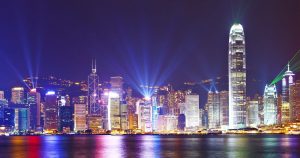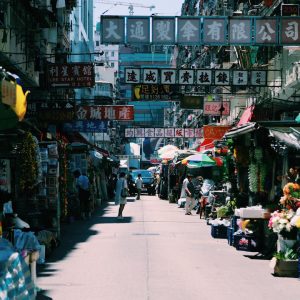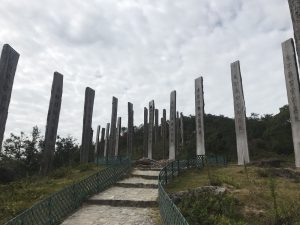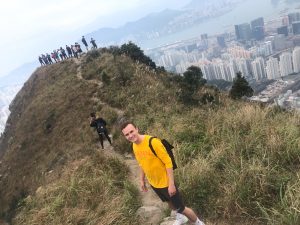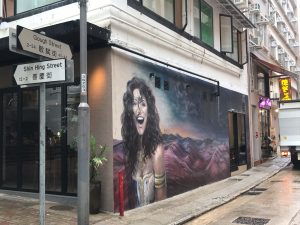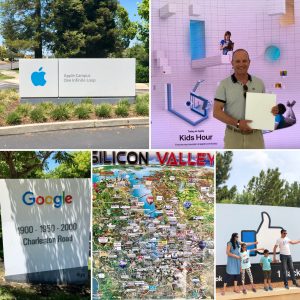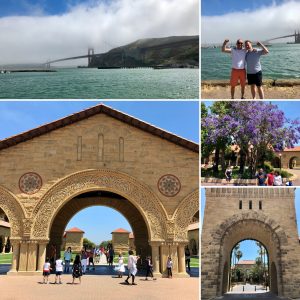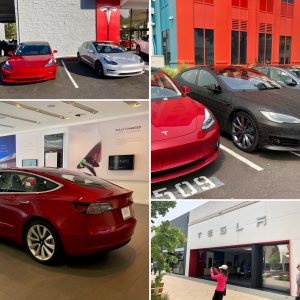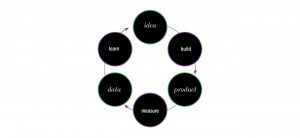Better Monday® Podcast
The Better Monday podcast is live today on Apple podcasts and Spotify. Welcome to listen Timo’s thoughts about impact investing, work culture and the importance of empathy in a business context.
Many thanks to Milla Heikkilä and Sofokus for the interview.
Home of the freest economy in the world
Mikael Ketonen
In early January I parted ways with a cold and slushy Helsinki scenery to embark upon a completely new experience in one of the most prominent and growing business metropolises in the world, namely Hong Kong. This is a city most well-known for its dense population, iconic neon lights and a skyline so filled with skyscrapers that only a handful of cities in the world can compete with. While the most obvious shock might have been the increase in population density from 16 people per square kilometre to nearly 7,000 people per square kilometre, Hong Kong is much more than just a densely populated city. It is the home of one of the strangest capitalist political systems in the world that markets itself as the freest economy in the world. It is a city that boasts the densest population of millionaires in areas such as Central and Admiralty, where every other piece of clothing you see reads either Balenciaga, Gucci or something of sorts. Meanwhile, just a 15-minute train ride away, areas like Sham Shui Po are cluttered with people selling fake electronics, clothing or collecting and selling cardboard off the streets just in order to make enough money to survive. It is a city that loves to display its luxurious lifestyle and money-centred culture while a large proportion of its citizens lie well below the poverty line. A division like this is by no means abnormal, but the reasons behind it make Hong Kong the most peculiar well-fare society in the world and raises enormous wonders regarding its future.
Symphony of Lights on Hong Kong Island, view from Kowloon
Sham Shui Po, Kowloon
Due to its complicated history, which includes an over 150-year period under British rule, the people of Hong Kong often have difficulties with recognizing their own identity and nationality. The British rule ended in 1997, with an oral agreement between the British and China which essentially entails that the current political system and the freedom of the people will remain unchanged for 50 years while Hong Kong adapts to the imminent reunion with China. In principle, the people are being forced to become Chinese, with whom they don’t even share a language, as the local Cantonese is very different from the Mandarin language spoken in mainland China. The opinions regarding this reunion are drastically split, as certain people see the threat of their personal and political freedom being reduced while others feel a stronger bond to mainland China. The consensus though, seems to be a general fear of the influence of the Chinese government and an unwillingness to identify as a Chinese citizen rather than a Hong Kong resident.
Wisdom Path near Big Buddha statue
Kowloon Peak
Economically speaking, the difference between the two nations is huge. Hong Kong boasts a system of minimal taxes, which makes it a paradise for corporate headquarters and wealthy individuals in general. To compensate for the revenue lost by minimal taxes, the government of Hong Kong has introduced a system where all the land belongs to the government. The land is then leased to real estate firms in an auction process, where prices usually surge to skyscraper-like heights. This lease is then incorporated into the price of an apartment or the rent, which explains why a one bedroom apartment in the city has an average rent of HK$ 18 000 (about 2050 €) a month. The obvious explanation for an inflated housing market like this is a lack of space, but in fact about 70 % of the land in Hong Kong is not being used and only 3,5 % of the land is zoned for housing. Thus, the prices are effectively deliberately being driven up, officially making Hong Kong the least affordable city in the world, by a landslide. According to The 15th Annual Demographia International Housing Affordability Survey (2019), the median property price is almost 21 times the median household income in Hong Kong. This means that most households can never even dream of owning an apartment in Hong Kong. Meanwhile, at one of the exclusive Golf Clubs on the Island side, the wealthy pay north of 35 million $HK for a membership. That is over 4 million €! It is an utterly strange setup, where a city has decided to go all out to ensure a free market and a fully-functional capitalist system, while simultaneously creating an impossible housing situation for the less wealthy. It is like the city has been designed to serve the rich in every way possible, but doesn’t know what to do with you if you are not.
Sheung Wan, Hong Kong Island
While the situation is indeed difficult and most of the blame is being shifted to the northern neighbour of Hong Kong, there is still a lot of hope and aspiration among the people. While the system is utterly divided, it still provides everyone with a chance to succeed, albeit facing enormous competition. When being accepted to one of the many universities in Hong Kong, students can live at university dorms for very reasonable prices, even on a Finnish scale. What needs to be emphasized is that the amount of money in Hong Kong is on another level compared to European cities and a common mind-set is that within this money lies the power to make improvements. ESG-factors (Environmental, Social & Governance) are becoming extremely important in corporations and among wealth managers in the city. While this will not solve the outrageous housing market, it still shows the willingness of the city and its residents to do their part and encourage sustainable investing and impactful behaviour in general.
Less wealthy individuals use the power of freedom of speech to constantly show their dissatisfaction towards the inefficient land management in Hong Kong. Other entrepreneurial minds are creating capsule-like homes of cheap materials to make the small apartments that people share more accommodating. While this is merely a band-aid type of solution, it shows that the people are effectively trying their best to find a solution to this one disastrous aspect of an otherwise exhilaratingly diverse and beautiful city. It is very difficult for a foreigner in the city to understand the very basis of this housing problem, as it is hidden away from the central areas and one really needs to search hard in order to see how scarce the availability of cheap living is in this self-proclaimed freest economy in the world.
Highlights from Silicon Valley
At the end of June we had the opportunity to take the direct Finnair flight to San Francisco for a week in Silicon Valley. My wife and I rented a small studio in Palo Alto via Airbnb and had the flat as our home base for visits in the region. The purpose of the trip was both business and pleasure, as the campus visits were part of the plan as well as meetings with clear objectives for some of the startups in our portfolio.
Apple Park
A true highlight of the trip was the Apple Park visit at One Infinite Loop in Cupertino on Friday 27th June. What we experienced was a real showcase of Art and Design. Apple’s iconic designer Jony Ive has always been my idol. Design is not just about the user friendly products; it’s the immaculate finish of manufacture and the magical user experience including the Apple stores. I actually bought the photo book of product design at Apple campus: Designed by Apple in California, one to enjoy while glancing through photographs and sketches of the most iconic products like the first iPhone. The iPhone is the one device that changed the way we communicate, create and live. While designing the iPhone many existing technologies were utilised, however, Apple was the company that patented the multitouch technology and gave us the magical user experience of a smartphone now loved by many of us. And Joy, our contact person was a perfect example of the friendly Apple people with true passion for the products. Pitched the idea and need for iOS development for one of our portfolio companies and Apple’s business expert followed-up on this in the following week. And now I’m reading Jony’s book once again.
“Different and new is relatively easy.
Doing something that’s genuinely better is very hard.” —Jony Ive
On a general note the Silicon Valley tour and campus spotting was well worth the time spent. We also visited the Facebook campus at Menlo Park and Google at Mountain View, as well as Tesla in Palo Alto.
San Francisco
During the weekend we visited San Francisco on a guided tour by Toni Perämäki, an old friend and COO of Valohai, a machine learning and AI startup from Finland. We had good discussions regarding the business opportunities and culture in Silicon Valley. California is clearly a place for creative people and for me it’s not at all like the other places in the US I’ve visited over the years. People have different values, the atmosphere is quite international and there is a clear trend for healthy food and lifestyle. The day included a trip over the Golden Gate bridge to Sausalito, a charming seaside town.
The weekend was complete with a tour of the Stanford University campus, amazing in terms of architecture and knowledge. A day of pondering and walking around this beautiful campus where ”the wind of freedom blows”. I wish I could return here some day to finish off my PhD.
Networking and new ideas
Networking, new ideas and connections are among the most valuable takeaways of this trip. The first few days of July included a visit at the Nordic Innovation House in Palo Alto, where I met with Hartti Suomela and Tan Thuong, Senior Advisors at Business Finland. They are helping Finnish and Nordic companies to get started in Silicon Valley and our discussions focused on healthy food trends, retail and how to find the right local partners. I’m very glad that they agreed to have Plantui Smart Garden samples at the showroom. This has already been set up by the kind initiative of Katja Kotala, Community Manager at the Nordic Innovation House. As a next step we’re actively looking for a local distribution partner for Plantui in CA.
A friend and former colleague Niklas Kiviluoto introduced me to Jon Snydal, who is the Design Director at the Cogniance design studio in San Francisco. Cogniance is design led technology consultancy: “We build impactful futures through design-led technology”. They have 500+ team members including 50 designers at their offices in Kiev, Ukraine and Poland, as well as a design studio in Munich. Among the topics discussed were holistic digital in-car experience, car dealership experience and driving aids for self-learning vehicles. As a small token of gratitude Jon also received the newly launched Haikara Watch designed by Harri Koskinen, which he seemed to appreciate. Here are a number of opportunities from a service design point of view including app development.
Last but not least – cars & music go together: like the hit song from my exchange student days in the 80’s “Drive” by The Cars and “Racing in the streets” by Bruce Springsteen. In CA there’s a Tesla on every corner including lots of new Model 3s. Let’s just hope Tesla can pick up its production and deliveries so we can soon have Model 3’s in Finland too.
Hope you enjoyed this short travel blog, written at the cottage in the archipelago in SW Finland. Best summer wishes to everyone!
Timo
Invest Like an Angel
Text: Roosa Laaksonen. Photo: Roope Lehmuslehto/ Betta Digital Oy.
Timo Ketonen is an entrepreneur and angel investor whose aim is to create as much success for startups as possible. As the CEO and Founder of the family-run Aboa Advest investment company, a member of the Finnish Business Angels Network (FiBAN) and one of the members of SHIFT Investor Network, Timo will be seen everywhere at this year’s SHIFT Business Festival. We met with Ketonen to discuss an angel´s attitude, investing strategy, and enthusiasm.
Why do you work with startups? ”It’s a ‘give back’ thing. I come from a 112-year-old family enterprise. My family is entrepreneurial from both sides of my family. I see it that I have been in a very privileged position my whole life. I also like to believe that startups need angel investors in order to really make it. We bring our know-hows, experiences and networks along. Personally, I don’t like the term ‘angel investor’ too much, but it has become a general term, like aspirin. However, I too in some way’s feel I’m an angel: I do a lot of pro bono work with startups. I can work from 60 to 80 hours a week, spending two-thirds of that time for them. There hasn’t been a single charmed year, but many good moments and the best ones are yet to come.”
”In this day and at my age, I get more joy out of others’ success. When younger, it was always me first. But, at the same time I feel that it’s even wrong to judge today’s youth. I see the yuppies of my generation as much worse. Today’s youngsters have a lot of energy and entrepreneurial spirit.”
”A couple of years ago, I joined the Finnish Business Angels Network because I was asked to. We’d like to activate the local business angels. SHIFT could work as a good umbrella term for this local business angel movement. I urge investors to come at SHIFT to learn and get new ideas as well as to expand their network. Last year, I especially liked the keynotes and the pitching competition. (I was strongly cheering for Belightful Design.)”
Do you have any tips for investing? ”I think the young should invest in learning and capacity-building, at the same time, to do new things. I myself have always been curious, you should too. Another point, invest in one’s communication skills! When a team has a problem, the angel investor has a problem also. Then, there might be cases when you may need to change the team. One of the main criteria’s I always check, is that the team has cross-disciplinary know-how’s and is preferably also multicultural. The people should have multiple competences and represent different ages and genders. And of course, team chemistry is essential – it shows in the results and the team spirit.
”Currently, I’m involved in 12 startups, of which I have an active role in six. My investment decisions are based on the ecological handprint that the startups have. Through my investments I can really have an influence on my surroundings and environment. For example, as I have Plantui Smart Gardens at home to grow my greens, trucks don’t need to hurtle on the roads for my herbs. All my start-ups need to have an ecological or social dimension in their agenda as well. This is what we call impactful investment.”
In this 60-80-hour mainly-startup work, you need to be creative and quite a perfectionist, needn’t you. ”My creativity is built on reading, listening, curiosity and travelling, especially in Asia. There people mustinnovate simply because there are so many of them. I think creativity is a trait of some kind, but you can pick it up also. I can’t reach perfection; however I can aim for the next best thing. I am a humane human. Humanity is born from empathy, listening and respect for others.”
What do you believe to be the next SHIFT in this country? ”It’s the change in one’s attitude. People should understand that an old lord’s attitude is a disappearing thing; You need to have an open mind and be willing to cooperate. To change, one needs to go inside their own head. Today’s leadership is built on listening. Companies also need different kinds of personalities in the teams at the start, growth and exit stages.”
“To close the gap between generations it’s good to rotate oneself in different gangs. My children are from 21 to 32 years old, through them I meet various kind of people in startups and when I worked at Palmu (Service Design agency) I collaborated with the ‘hipster’ generation. When it comes to the naivety of youth, I would better call it enthusiasm. The more you have faith and enthusiasm, the better.
Is there someone you look up to? “I do have an idol, Elon Musk. He has said a sentence that I use also in my work with startups: ‘If something is important enough, even if the odds are against you, you should still do it.’ And indeed, it’s Musk that I would like to see at this year’s SHIFT.”
Check out Ketonen’s SHIFT video message (in Finnish).
Learn more about the Aboa Advest investment company’s team.
On the 31st of May, FiBAN holds the Pitch Finland competition at SHIFT 2017.
More information here.
P.S. Public crowdfunding for Plantui starts in week 21, and continues until 30.6.
Entrepreneurial Leadership and Startups
Entrepreneurial Leadership is in demand in both Startups and established firms. “Entrepreneurial leadership involves influencing and directing the group members toward achieving those organizational goals that involve recognizing and exploiting entrepreneurial opportunities.” (Ref: Understanding and Measuring Entrepreneurial Leadership Style by Maija Renko, Ayman El Tarabishy, Alan L. Carsrud, and Malin Brännback, Journal of Small Business Management, 2015).
Personally I recognize the need for entrepreneurial leadership in order to achieve success in any organization. My work experience is both from a Family Business, a big financial institution as well as working as Partner at a Service Design agency. More recently I have been working as advisor and investor in a good number of Finnish startups. The style of leadership may vary in different organizations, but a startup is no different from an established firm. The reasons for success of Apple are often listed to include the innovative and entrepreneurial spirit of its late CEO Steve Jobs. The same can be said about Tesla Motors and its CEO Elon Musk. Both of these CEO’s have been extremely innovative and demanding. Elon Musk has been quoted as saying: “Work like hell. I mean you just have to put in 80 to 100 hour weeks every week. This improves the odds of success. If other people are putting in 40 hour weeks… you will achieve in 4 months what it takes them a year to achieve.” Obviously this kind of entrepreneurial leadership implies that the whole workforce must be inspired to put in their best effort and believe in the vision shared by its leader. No firm is a one-man band.
The same principles apply to startups, where the founders must be innovative in order to build the business from scratch, whilst managing to obtain funding from business angels or seed investors. In his book ‘The Lean Startup’ first published in 2011 Eric Ries defines a newly started company as follows: “A startup is a human institution designed to create a new product or service under conditions of extreme uncertainty.”
Entrepreneurship is management. It is only a myth that a startup could blossom in total chaos, it never happens and most startups actually fail for many reasons, e.g. they cannot construct the right product or service in order to find enough customers to secure cashflow and profitability. A startup requires a new kind of management specifically geared to its context of extreme uncertainty. I am particularly fond of the Lean Startup method (Build – Measure – Learn) as it is a proper tool “to build capital-efficient companies because it allows startups to recognize that it’s time to pivot sooner, creating less waste of time and money”.
The figure below illustrates what the term ‘validated learning’ means in practice. “Validated learning is the process of demonstrating empirically that a team has discovered valuable truths about a startup’s present and future business prospects.“ (Ref: The Lean Startup by Eric Ries, 2011).
I am currently actively involved in several Finnish startups in different fields of business. My investments focus mainly on Greentech, Corporate Responsibility, as well as ecological products and services based on sustainable business. In any startup the core team is the most important asset. A unique idea is a good start, but its implementation and timing are crucial to success. It is here that the Lean Startup method and validated learning can help the startup find success sooner rather than later. This method is applied in the business development of Plantui, a Design & Food Tech company. Certainly we have made a few mistakes in the case of Plantui since it was founded in 2012, however, we are trying to learn as fast as we can and hopefully it will bring us good results in the near future. Last week team Plantui gave a keynote held at Creative Business Camp. At the event we actually managed to engage the audience and received many useful ideas that we will evaluate. Co-creation of new products and services always involves working with current and potential customers. Co-design should be a working practice in every company.
In the media industry, the subject of my previous research, we can see the same kind of entrepreneurial leadership in those firms that are successful in building new services in the digital ecosystem. Some media startups like The Huffington Post and BuzzFeed have already grown to established publishers in their own right, alongside old and well respected media brands like The Economist and The New York Times. Even a startup like Snapchat (photo-messaging app) is now hiring journalists to cover the 2016 presidential race and other news events. New media startups are often faster in developing new services than established media firms. This may be a reason why established Nordic media firms like Alma Media, Bonnier and Sanoma have started their own accelerator and venture programs in order to help build new products and services. Some other Nordic media groups like Aller Media, Otava and Schibsted have acquired startup companies in order to build their digital business and social media marketing competence. More about this in a later blog post on my ‘MEDIANOMICS’ blog.
